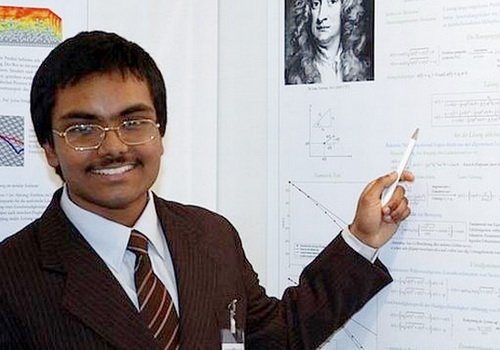Shouryya Ray, 16-year-old genius, didn’t actually solve Newton’s puzzle
Last month it was widely reported that 16-year-old Shouryya Ray had solved a problem first posed by Isaac Newton over 350 years ago that has baffled mathematicians ever since.
Shouryya Ray, an Indian-born student, who lives in eastern Germany and was conducting an internship at Technische Universität Dresden, was hailed as a genius for working out two fundamental particle dynamics equations that previously could only be approximated using computers with partial solutions. His solutions allegedly allowed for exact calculation of a projectile’s trajectory under gravity and subject to air resistance.
In layman’s terms, an object’s flight path could now be calculated and predictions made about how the item would collide with and ricochet off a barrier.
As it turns out, Shouryya Ray did not solve Newton’s 300-year-old puzzle – because the problem never actually existed.

Shouryya Ray was hailed as a genius for working out two fundamental particle dynamics equations that previously could only be approximated using computers with partial solutions
“The misunderstanding starts here already – Newton did not <<pose a problem>>,” Jürgen Voigt, a math professor at TU Dresden, told The Huffington Post.
“He stated that the motion of a body under the influence of gravity and friction in the air is governed by a certain differential equation. Meanwhile, the classical theory of ordinary differential equations yields that this equation can be solved, and that the solution can be represented in a certain form – a series.”
“Classical,” Jürgen Voigt notes, means that the theory is contained in textbooks, and is presented in second- or third-year courses at the university.
Jürgen Voigt and his colleague at TU Dresden, Professor Ralph Chill, published a four-page report June 4 in which they attempted to contextualize Shouryya Ray’s work and compare it with results presented in preexisting literature.
Jürgen Voigt emphasized that Shouryya Ray was deserving of the research award he received, and that the student’s work should be appreciated from the perspective that he is a 16-year-old high school student using a kind of mathematics far beyond high-school level.
That said, Shouryya Ray’s alleged solutions were “not endorsed by experts in the field who should have been involved in the evaluation of the work,” Jürgen Voigt and Prof. Ralph Chill wrote in their published comments on the young man’s work.
Furthermore, his steps were largely already known to experts.
Jürgen Voigt said he did not know how the public was made to believe that a long-standing problem had been solved.
“The point is not that something is missing in Ray’s analysis, but rather that there was no <<problem posed by Newton>>, and that the methods used by Ray are exceptional and remarkable for a high-school student, but standard for professional mathematicians,” Jürgen Voigt said.
[youtube P0SzKwSo-Vw]
[youtube a29r8eqTPOs]
